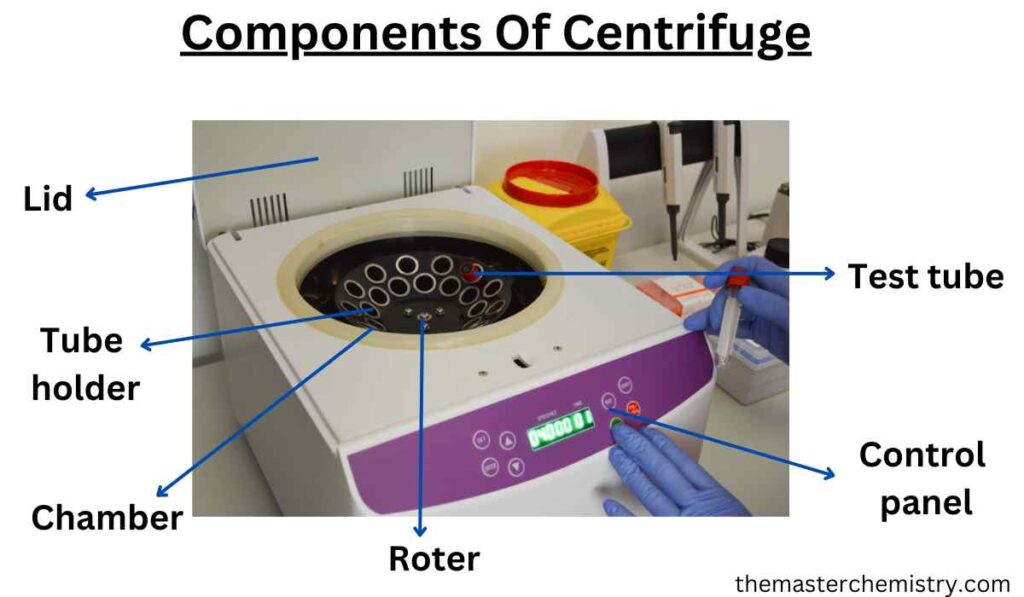Centrifuge: A Powerful Tool in Scientific Research and Beyond
Introduction
Table of Contents
Centrifuges play a crucial role in various fields of research, industry, and medicine. These powerful machines utilize centrifugal force to separate substances of different densities. In this article, we will explore the working principle, components, types, and applications of centrifuges.
I. What is a Centrifuge?
A centrifuge is a laboratory instrument used to separate substances based on their density. It achieves this separation by subjecting a mixture to high-speed rotation, generating centrifugal force that causes the denser components to move outward while the lighter components remain closer to the center.

II. Working Principle of Centrifuges
Centrifuges operate on the principle of sedimentation, where particles in a liquid settle at different rates based on their density. The process involves the following steps:
1. Sample Preparation
The mixture to be separated is prepared and placed in specialized containers called centrifuge tubes. These tubes are designed to withstand high-speed rotation.
2. Loading the Centrifuge
The centrifuge tubes are carefully loaded into the rotor, which is the part of the centrifuge that holds the tubes. It is essential to distribute the tubes symmetrically to maintain balance during operation.
3. Spinning Process
Once the rotor is loaded, the centrifuge is closed and activated. The rotor starts spinning at high speeds, generating centrifugal force. This force causes the denser particles to migrate towards the walls of the centrifuge tubes.
4. Separation and Collection
As the spinning continues, the denser components settle at the bottom of the tubes, forming a pellet. Meanwhile, the lighter components remain closer to the top. After the desired separation time, the centrifuge is stopped, and the tubes are carefully removed to collect the separated substances.
III. Components of a Centrifuge
A centrifuge consists of several key components:

1. Centrifuge Rotor
The rotor is the central component of the centrifuge and holds the centrifuge tubes. It is designed to rotate at high speeds, creating the necessary centrifugal force for separation. Rotors come in various shapes and sizes, depending on the application and type of centrifuge.
2. Control Panel
The control panel allows users to set the desired speed, time, and other parameters for the centrifuge operation. It provides a user-friendly interface to monitor and control the process.
3. Motor and Drive System
The motor is responsible for spinning the rotor at high speeds. The drive system ensures smooth and stable rotation while maintaining balance.
4. Safety Features
Modern centrifuges are equipped with safety features such as lid locks, imbalance detection, and automatic shutdown mechanisms to prevent accidents and ensure user safety.
IV. Types of Centrifuges
Centrifuges are available in various types, each catering to specific applications:
1. Microcentrifuges
Microcentrifuges are compact and designed for small volumes of samples. They are commonly used in molecular biology, biochemistry, and clinical research.
2. Benchtop Centrifuges
Benchtop centrifuges are larger and more versatile than microcentrifuges. They can handle larger sample volumes and offer a wider range of speed and temperature settings.
3. Floor-standing Centrifuges
Floor-standing centrifuges are heavy-duty instruments used for high-capacity applications. They are commonly found in industrial and medical settings, capable of handling large volumes and high-speed separations.
V. Applications of Centrifuges
Centrifuges find applications in a wide range of fields:

1. Biological Research
Centrifugation is essential in various biological research areas such as cell biology, biochemistry, and genetics. It is used for isolating cellular components, separating DNA, and purifying proteins.
2. Clinical Diagnostics
In medical laboratories, centrifuges are used for analyzing blood samples, separating plasma or serum, and performing diagnostic tests.
3. Pharmaceutical Industry
Centrifuges play a crucial role in drug development and manufacturing processes. They are used for separating and purifying active pharmaceutical ingredients (APIs), isolating cells for biopharmaceutical production, and more.
4. Industrial Applications
Centrifuges are utilized in industries such as oil and gas, wastewater treatment, and food processing. They are used for separating impurities, clarifying liquids, and recovering valuable substances.
VI. Centrifuge Price Range
The price of centrifuges varies depending on factors such as capacity, speed range, and additional features. Microcentrifuges are generally more affordable, with prices ranging from $200 to $2,000. Benchtop centrifuges can cost between $1,000 and $10,000, while floor-standing centrifuges can range from $10,000 to $100,000 or more, depending on their capacity and capabilities.
Centrifuges are indispensable tools in scientific research, healthcare, and industrial processes. With their ability to separate substances based on density, they enable researchers, technicians, and professionals to perform a wide range of essential tasks. Understanding the working principle, components, and types of centrifuges helps us appreciate their significance and broad applications across various fields